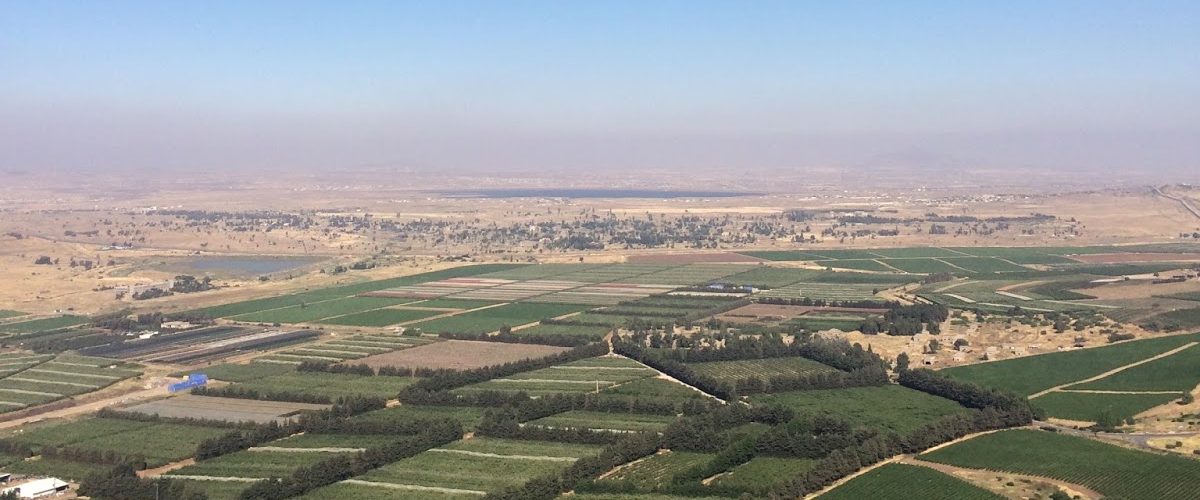Research Paper By Gabrielle Burack
At the heart of the Israeli-Palestinian conflict is the dispute over land and borders. The geography of the conflict revolves around three territorial units of Israel: the West Bank, Gaza, and East Jerusalem. The issue lies in establishing agreeable borders that satisfy both Israel’s and Palestine’s security concerns. Another debate is over whether or not Jerusalem can be split in order to be the capital of both states. The Palestinian side wishes to return to pre-1967 borders; however, Israel believes this would compromise its security. Since 1967, Israel has pursued a policy of building settlements on the West Bank, which are linked by Israeli-controlled roads and cover about 2% (although this number is often disputed) of the area.These settlements cause tension within the region and hinder potential peace deals between Israelis and Palestinians. The past three United States Presidents, Bill Clinton, George W. Bush and Barack Obama, have attempted to negotiate a two-state solution between the current leaders of the Palestinian territories and the Prime Minister of Israel. Each attempt at peace talks resulted in failure.
In 1993, the Oslo accords made several breakthroughs in the Israeli-Palestinian peace talks. Israeli Prime Minister Yitzhak Rabin and the head of the Palestinian Liberation Organization (PLO), Arafat, agreed to create the Palestinian Authority as a self-government in the Gaza Strip and portions of the West Bank. Israel recognized the PLO as the legitimate representative of the Palestinian people, and in exchange, the PLO recognized Israel’s right to exist, renounced its goal to destroy the state of Israel, and foreswore armed attacks.
In 2000, President Bill Clinton called a summit at Camp David to encourage negotiations between Arafat and Israeli Prime Minister Ehud Barak. The Palestinian side wanted a right of return for Palestinian refugees, but Israel refused to negotiate the terms of the refugees’ return. Barak offered refugees 92% of the West Bank and all of the Gaza Strip, as well as a land swap in exchange for Jewish settlements in the West Bank. The Palestinian side refused this deal because they felt that Israel wanted to exchange unusable areas in the Negev Desert for the West Bank’s most fertile land. Israel then offered to concede three-quarters of the Old City of Jerusalem, while the Palestinians demanded full sovereignty over the Temple Mount, which would carry the risk of Jews losing their holiest sites. Unfortunately, the Camp David meeting concluded without agreement.
In September 2000, the Second Palestinian Intifada paused all land and peace negotiations. In late December 2000, Clinton attempted to make peace in the region one more time before he left office. This is known as the Clinton Parameters, which offered proposals for dealing with the issue of settlements, Jerusalem and refugees. In terms of borders, the plan offered the Palestinians control over a sovereign, contiguous, viable state that would be recognized by the international community; sovereignty over Al Haram al-Sharif in Jerusalem; and, control over the Arab sections of Jerusalem, serving as the capital of a Palestinian state. The Israelis were promised the right for 80% of the West Bank settlers; security guarantees; control over the Jewish sections of Jerusalem, the official internationally recognized capital of Israel; and, control over and access to Jewish holy sites in Jerusalem, including sections of the Temple Mount. These terms were tentatively agreed to; however, the negotiations again fell apart.
In June 2002, President George W. Bush became the first U.S. President to call explicitly for an independent Palestinian state that exists in peace next to Israel. The Bush Administration publicly committed itself to the Road Map, which was a framework for lasting security and peace in the Middle East. The Road Map was divided into three phases. The first was that the Palestinians would stop violence, stop funding terrorist groups, begin political reform and hold elections. Israel would pause settlement activity and withdraw from the territories as the terrorism concluded. The second phase included the beginning of an independent Palestinian state. The third phase would finalize the official borders of the independent Palestinian state.
In 2003, the Geneva Accord was developed by former Israeli and Palestinian diplomats, officials, and security experts who had participated in past official negotiations. Some of the points in the Geneva Accords include: Israel and Palestine would recognize each other as the homelands of their respective people; Palestine would get 98.5% of the occupied territories, most of the settlements in the West Bank and Gaza would be dismantled; Jerusalem would be the capital of the two states. In 2005, Israel disengaged from the Gaza Strip and withdrew Israeli civilians and military forces from the area, leaving the Palestinian Authority with complete control.
During the Obama Administration, Secretary of State John Kerry attempted to negotiate a peace agreement with Abbas and Netanyahu, which ultimately failed like every other U.S. attempt. Obama’s administration argued that the most effective two-state solution would be to return to the idea of pre-1967 lines, but also include land swaps to adjust to the changing times within the region. The Palestinian side wanted their state to span from Gaza and the West Bank with East Jerusalem as their capital. The issue with the peace negotiations remained with John Kerry promising that Israel would release all Palestinian prisoners by April 2014 and that Netanyahu would stall all settlements during the peace negotiations. However, Netanyahu did not release the final set of prisoners and claimed that he would not stall any settlements.
Most notably, peace negotiations have been unsuccessful due to the Palestinian Authority and Israeli government’s inability to reach final land agreements. This can be attributed to the geopolitical disunity lack of unity within Palestinian borders, meaning that the West Bank and Gaza are remotely situated from each other. Additionally, the borders need to appear fair to both sides, so that the Palestinians and Israelis each receive about the same amount of fertile land. Without a defined border, Palestinians will have a difficult time defining their own cultural values and will be displaced without a proper agreement of where their borders start and finish.
Currently, with Prime Minister Netanyahu in power, securing a peace deal and permanent borders appear far out of reach. In August, Netanyahu declared that he would never remove forces from the West Bank because he believes that historically, uprooting settlements has not improved peace in the region. Further, he argues that doing so will put the Ben Gurion Airport in danger since it runs along the border of the West Bank. Netanyahu was unable to come to negotiations with prior U.S. President Barack Obama, which had much to do with his desire to keep control of land. Arguably, ensuring that Israel maintains control over the West Bank and Gaza will protect Israel. However, members of the Likud party, or the far right, tend to grasp onto land only to have it. The U.S. has attempted to play a role in these peace negotiations; however, neither the Palestinian Authority or Israel seems to want to give up power and reach a compromise.
President Donald Trump’s visit to Israel and then to Palestinian territories to meet with Palestinian leader Mahmoud Abbas began the current presidency’s talk of peace and borders. Trump claimed that solving the Israeli-Palestinian conflict was the key to solving peace in the Middle East, and Abbas is committed to working with Trump to create a peace deal. However, while meeting with Abbas, Trump failed to mention the possibility of a two-state solution. Failing to discuss the solution of Palestinian displacement, and potential final borders of Israel and Palestine could cause more tension within the region. When Trump presented his speech at the United Nations in late September 2017, he omitted the two-state solution as a priority in achieving peace in the Middle East once again. Unless the U.S. continues its presence in the peace talks, the final borders may not be negotiated.
At present, it is difficult to establish a complete peace deal between Israelis and Palestinians without truly defined borders. There needs to be cohesion between the two parts of Gaza and the West Bank in order for a two-state solution to be a possibility. The U.S. would benefit from being more vocal about brokering a two-state solution. The administration should work towards meeting with both Abbas and Netanyahu one-on-one to better understand what each side would be willing to negotiate on in terms of borders. Once there is an understanding, then a conference can be put in place to start the process towards a two-state solution. Understanding both the Palestinian and Israeli side of borders will play a critical role in ensuring that the U.S. authority is not viewed as simply pushing ideas onto the two leaders, but rather, is making thoughtful suggestions. Hopefully, this will enable the Palestinian Authority and Israel to come to a deal on their own. A one-for-one land swap appears to be a good suggestion, as Netanyahu is unwilling to give up land without getting land in return. The U.S. should also play a role in suggesting Israel return to pre-1967 borders, as this time once marked a long period of peace between Israelis and the Palestinian authority.

Gabrielle Burack
Gabrielle Burack is a Senior at American University pursuing a bachelor’s degree in International Studies. She recently returned from studying abroad in Brussels, Belgium where she studied the European Union government. Gabrielle currently interns at the United States Senate in Elizabeth Warren’s Office, and she formerly interned at the Organization for Refuge, Asylum and Migration in Tel Aviv. Gabrielle is also a member of Alpha Xi Delta. When she is not watching Disney movies or talking about dogs, she can be found sitting at Starbucks.
For any article inquiries, please contact Garbrielle Burack directly at the email provided: gb9277a@student.american.edu.


